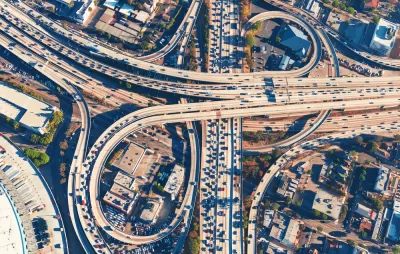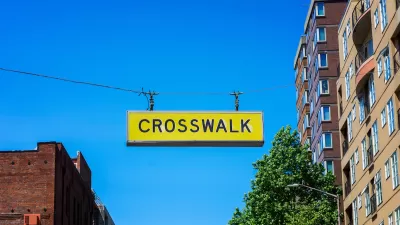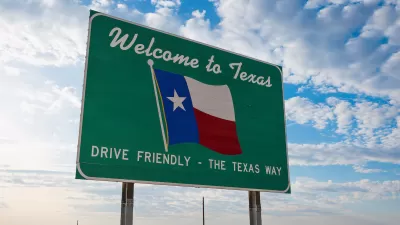Despite its ambitious emissions reduction goals, California continues to spend a majority of transportation funds on car-centric infrastructure.

The Los Angeles Times editorial board takes California state leaders to task on its climate goals, charging that “when it comes to cutting the state’s biggest source of planet-warming emissions — cars, trucks, airplanes and other modes of transportation — the spending doesn’t match the rhetoric.”
The editorial references two recent reports that reveal a lack of progress on the state’s promise to cut vehicle miles driven and reduce greenhouse gas emissions. One report from NextGen Policy shows that “traffic and car dependence has increased in recent years.” The board writes that this is largely because the state “continues to spend the bulk of its transportation dollars to maintain and expand car-centric roads and freeways.”
However, “Instead of doubling down on the existing system that makes it inconvenient and unsafe to travel by bike, foot and transit, California should be spending the bulk of its transportation funding to remake the urban landscape so people have real choices in how they get around.” In fact, only 19 percent of transportation funding has gone to non-driving projects such as public transit, bike lanes, and pedestrian infrastructure.
According to the editorial, “About 70% of the state’s transportation dollars go to road maintenance, as required by the state’s gas tax spending plan.” But, if used strategically, this funding could also support bike and pedestrian infrastructure.
Ultimately, the board writes, “The state needs to radically redesign its transportation system to reduce the need for people to drive everywhere all the time.”
FULL STORY: Editorial: California’s transportation spending doesn’t match its climate promises

Maui's Vacation Rental Debate Turns Ugly
Verbal attacks, misinformation campaigns and fistfights plague a high-stakes debate to convert thousands of vacation rentals into long-term housing.

Planetizen Federal Action Tracker
A weekly monitor of how Trump’s orders and actions are impacting planners and planning in America.

In Urban Planning, AI Prompting Could be the New Design Thinking
Creativity has long been key to great urban design. What if we see AI as our new creative partner?

King County Supportive Housing Program Offers Hope for Unhoused Residents
The county is taking a ‘Housing First’ approach that prioritizes getting people into housing, then offering wraparound supportive services.

Researchers Use AI to Get Clearer Picture of US Housing
Analysts are using artificial intelligence to supercharge their research by allowing them to comb through data faster. Though these AI tools can be error prone, they save time and housing researchers are optimistic about the future.

Making Shared Micromobility More Inclusive
Cities and shared mobility system operators can do more to include people with disabilities in planning and operations, per a new report.
Urban Design for Planners 1: Software Tools
This six-course series explores essential urban design concepts using open source software and equips planners with the tools they need to participate fully in the urban design process.
Planning for Universal Design
Learn the tools for implementing Universal Design in planning regulations.
planning NEXT
Appalachian Highlands Housing Partners
Mpact (founded as Rail~Volution)
City of Camden Redevelopment Agency
City of Astoria
City of Portland
City of Laramie





























